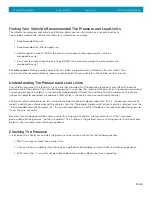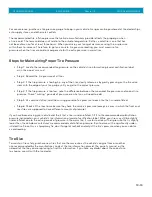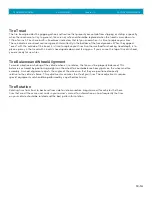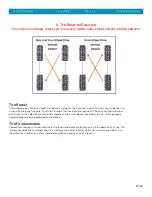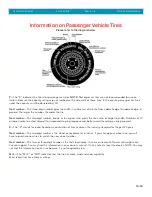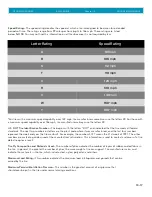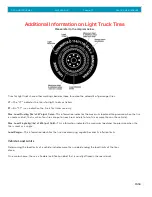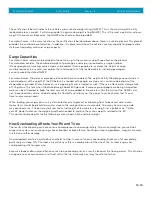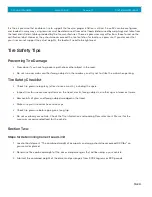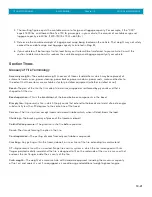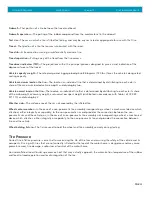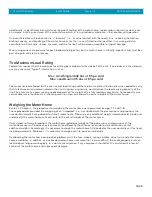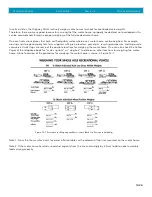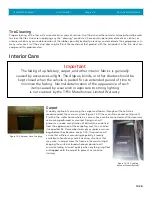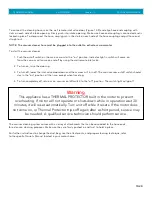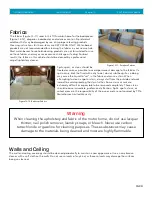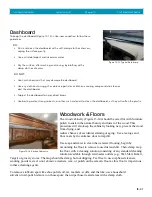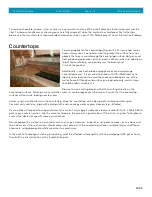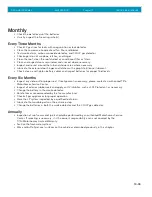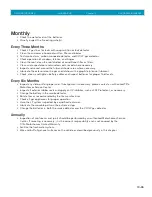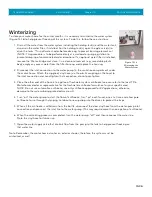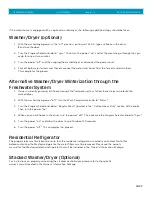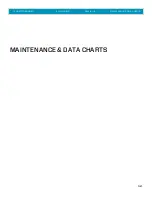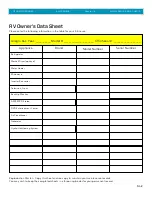
TIFFIN MOTORHOMES
–ALLEGRO BUS®
Chapter 13
ROUTINE MAINTENANCE
13-25
Additionally, underinflated tires will also cause poor handling of the motor home, rapid and/or irregular tire wear, and
an increase in rolling resistance of the motor home which, in turn, produces a decrease in fuel economy of operation.
An overinflated tire will reduce the tire’s “footprint” (i.e., its actual contact with the road); thus, reducing the traction,
braking capacity, and handling of the motor home. A tire that is overinflated for the load that it is carrying will also
contribute to a harsh ride, uneven tire wear, and the tire itself will be more susceptible to impact damage.
Maintaining correct tire pressure for each loaded wheel position on the motor home is critically important and must be a
part of regular vehicle maintenance.
Tire Maximum Load Rating
Federal law requires that the maximum load rating be molded into the sidewall of the tire. If one looks at a tire sidewall,
one may see some “typical” information, such as:
Max. Load Single 3640 Lbs at 85 psi cold
Max. Load Dual 3415 Lbs at 85 psi cold
The maximum load allowed for the size tire and load rating and the minimum cold air-inflation pressure needed to carry
that stated maximum load are noted on the tire. Using less air pressure would reduce the load-carrying capacity of the
tire. The amount of air pressure one needs depends on the weight of the fully loaded motor home. Consequently, one
cannot determine the correct air-inflation pressure, unless one knows the actual weights of the motor home.
Weighing the Motor Home
Earlier, in Chapter 1, the procedures for weighing the motor home were presented (see pp. 1-7 and 1-8).
These procedures provided the weighing of an “unloaded” (i.e., not stocked with the possessions and provisions the
user would normally have onboard for travel) motor home. Obviously, any additional weight stored onboard (inside and
underneath) the motor home will contribute to the overall weight of the motor home.
If not stored uniformly throughout the motor home, additional weight of the possessions and provisions of the
motor-home user will load each axle and each tire differently (front-to-rear and side-to-side distribution of that
additional weight). Accordingly, it is necessary to weigh the motor home fully loaded as the user would have it for travel,
including occupants. Moreover, it is necessary to weigh each tire position individually.
Overloading the motor home can produce problems with the tires, wheels, springs, brakes, drive train, and other motor
home assemblies. In addition, an overloaded motor home uses more fuel, is more difficult to handle properly, and can
lead to driver fatigue more quickly. In a worst-case condition, if any component should fail, this could result in loss of
control of the motor home and subsequent damage.
Summary of Contents for 2014 Allegro Bus
Page 6: ... TIFFIN MOTORHOMES ALLEGRO BUS Chapter 1 GENERAL INFORMATION GENERAL INFORMATION 1 1 ...
Page 51: ... TIFFIN MOTORHOMES ALLEGRO BUS Chapter 5 CABINETS FURNITURE CABINETS FURNITURE 5 1 ...
Page 55: ... TIFFIN MOTORHOMES ALLEGRO BUS Chapter 6 STRUCTURAL FEATURES STRUCTURAL FEATURES 6 1 ...
Page 57: ... TIFFIN MOTORHOMES ALLEGRO BUS Chapter 7 ELECTRICAL FEATURES ELECTRICAL FEATURES 7 1 ...
Page 72: ... TIFFIN MOTORHOMES ALLEGRO BUS Chapter 8 SLIDE OUT FEATURES SLIDE OUT FEATURES 8 1 ...
Page 76: ... TIFFIN MOTORHOMES ALLEGRO BUS Chapter 9 EXTERIOR FEATURES EXTERIOR FEATURES 9 1 ...
Page 83: ... TIFFIN MOTORHOMES ALLEGRO BUS Chapter 10 INTERIOR FEATURES INTERIOR FEATURES 10 1 ...
Page 87: ... TIFFIN MOTORHOMES ALLEGRO BUS Chapter 11 PLUMBING BATH FIXTURES PLUMBING BATH FIXTURES 11 1 ...
Page 105: ... TIFFIN MOTORHOMES ALLEGRO BUS Chapter 13 ROUTINE MAINTENANCE ROUTINE MAINTENANCE 13 1 ...


